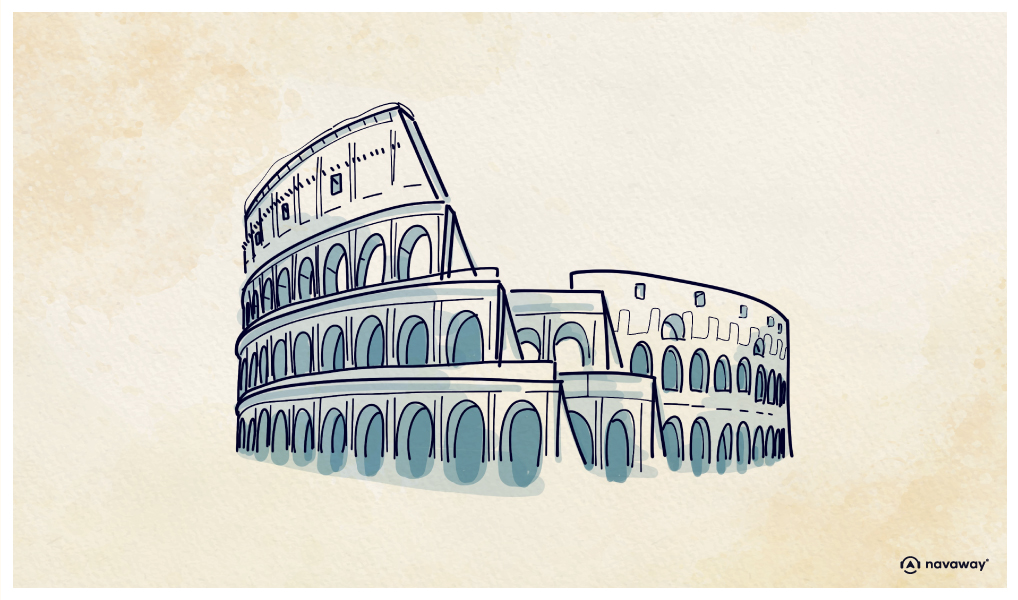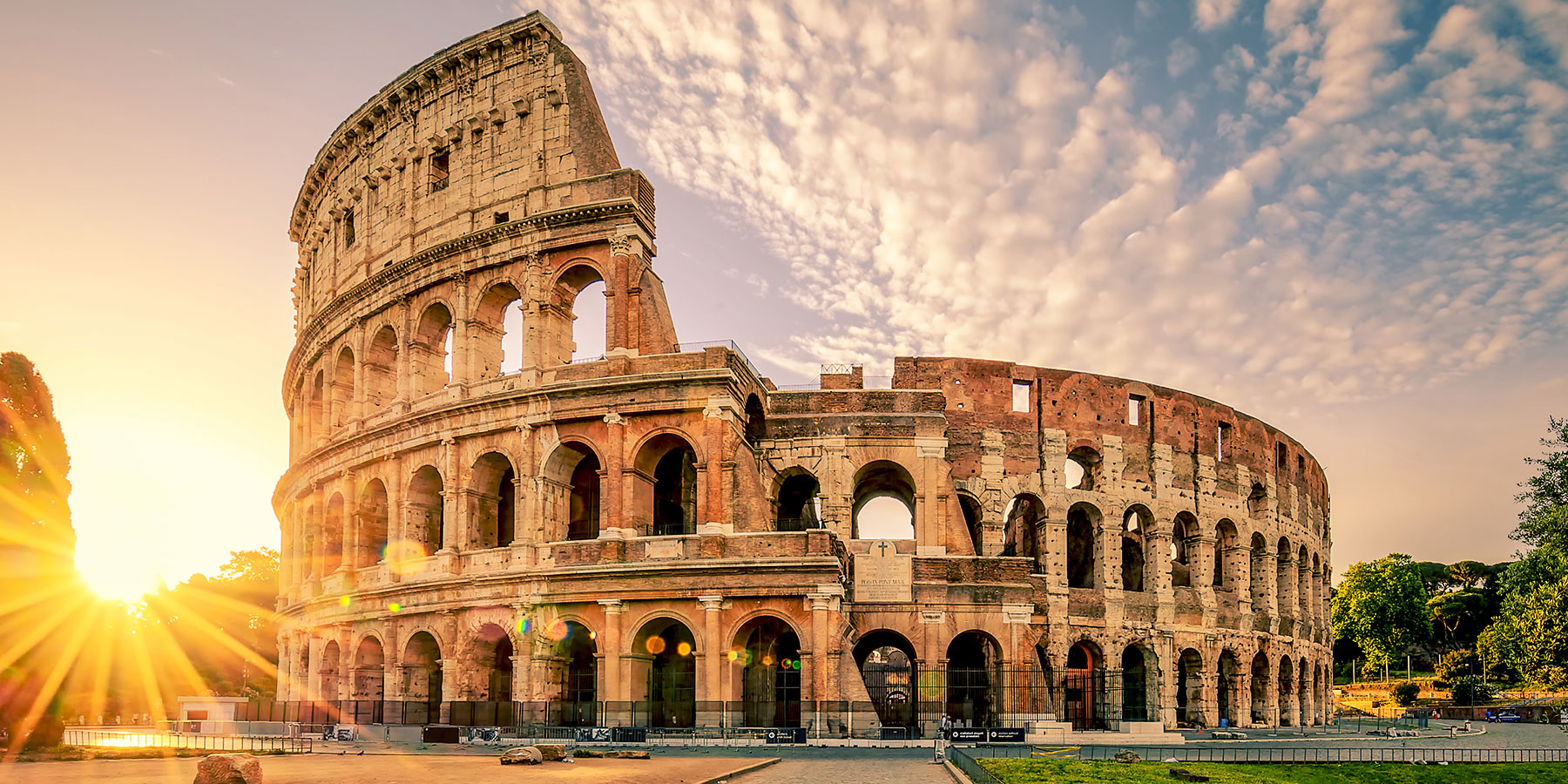
The Colosseum

This point of interest is available as audio on the tour: Visit Rome, The Eternal City
Introducing the famous Colosseum! I know, it’s huge. The Flavian Amphitheater before you is the largest ever built by the Romans! That being said, the name Colosseum is not due to its size, but to the colossal statue that once stood at its entrance. It originally depicted Emperor Nero, then remodeled to look like Helios, the sun god, and then they decided to just replace the head each time a new emperor came to power. The name Colosseum gave way to Coliseum in the Middle Ages, and eventually became a common name for amphitheaters and arenas in general. This one, the first of its name, was built in 72 BC at the request of Emperor Vespasian and completed during the reign of his son Titus. The construction of this immense entertainment venue was in fact a political statement, directed against Nero, who had confiscated this public space for his own personal use. Emperor Vespasian financed the project with war booty and the treasures taken by his armies, notably during the sack of Jerusalem and the looting of its famous temple. The Colosseum could seat over 50,000 spectators, with dressing rooms to accommodate up to 2,000 gladiators! Just imagine what a place like this meant to the Romans! A place of both revelry and retribution. The public games held there, the so-called “Ludi Romani,” could last a whole week and they always drew a large crowd! The goal was to entertain the people. And let me tell you, you could see everything from gladiatorial fights, wild animal hunts and reenactments of famous battles, to public executions and so on. You should know that back in the first centuries AD, Christians were persecuted in Rome. It may seem a bit ironic today, but they were seen as outlaws by the polytheistic Romans, and many of them were killed within the walls of the Colosseum. A horrifying total of 300,000 to 500,000 people met their death in the Roman arenas, all in the name of entertainment! As Christianity gained ground in Rome, the more barbaric games were abolished, and it was left to the poor exotic animals to entertain the crowds until around the 5th century. In terms of architecture, the Colosseum is a true feat of engineering and a testament to Roman ingenuity. Just to give you an idea, some 2000 sailors helped put into place the immense linen awning that provided shade for spectators in summer. The Colosseum’s immense seating capacity called for an efficient evacuation plan, and its designers created a system remarkably similar to the ones found in modern stadiums. And don’t be fooled into thinking that seating was on a first-come, first-served basis. Spectators were given numbered ceramic tokens, which showed them the way to their section and row. They got there via vomitories opening onto the bleachers. It’s been calculated that the entire audience could be seated in an hour, and out the door in a matter of minutes. If the Colosseum is partly destroyed today, it’s mainly because of the great earthquakes that left behind plenty of stones to be used by Popes for the construction of churches and palaces. Despite everything, it’s easy to imagine what the Colosseum might have looked like in its full glory, and it’s no wonder it’s still considered a masterpiece of Roman art today. Needless to say, it’s been listed as a UNESCO World Heritage Site.

Discover other tours to visit Rome

Discover Rome with app
An interactive guide through the most beautiful streets, squares, and districts
23 fun audioguides full of historical facts, anecdotes, and legends






Comments